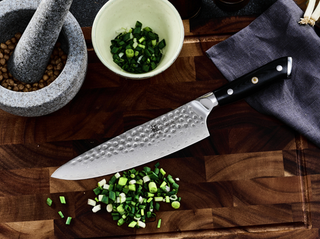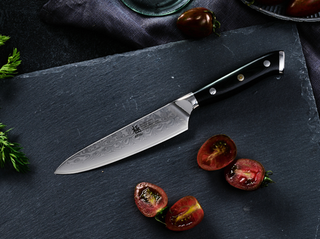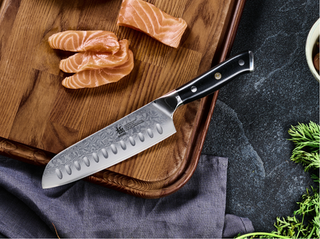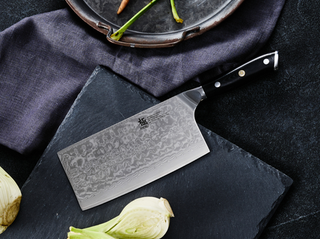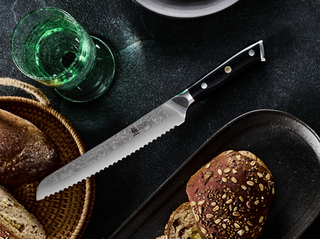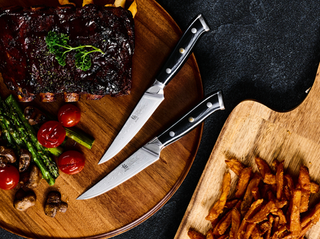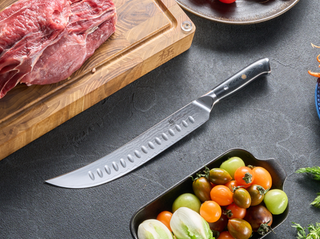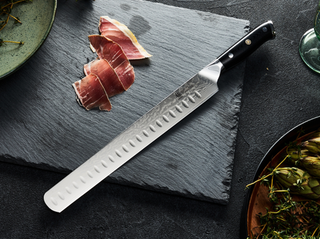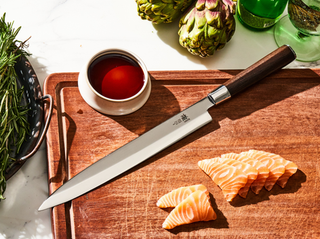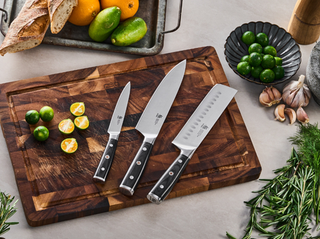Ever chopped an onion? Unless you absolutely hate the way onion brings you to tears, the vegetable is a cooking staple in every kitchen. But are you also aware of how much precision dicing requires? You don’t only need precision but also have to have the right tools. Today, many home cooks and professional chefs turn to Japanese knives for this task. But what is so special about these knives? These knives are famous for their sharpness, balance, and craftsmanship all around the world. They are useful if you want delicate and precise work when dicing an onion.
Let's dive in and discover the magic behind the onion-dicing revolution.

How to Dice an Onion
Chopping an onion seems straightforward, but there is a technique to it. That technique makes pieces uniform and ensures that you cut safely. Let us see how this takes place step-by-step:
1. Prepare the Onion: Start by cutting off the non-root end of the onion. You can then leave the root end intact to keep the onion together while chopping. Remember to peel off the outer layers.
2. Make Horizontal Cuts: Place the onion cut-side down on the cutting board. Now hold the onion firmly with one hand and make several horizontal cuts into the onion. You have to stop just before you reach the root. These cuts should be spaced on how finely you want to cut the onion.
3. Make Vertical Cuts: Next, turn the onion and make vertical cuts. These cuts should be perpendicular to the horizontal cuts that you just made. You can stop just before you reach the root again.
4. Dice the Onion: Finally, you can slice down across the onion. It should be perpendicular to the last cuts. Make sure the onion falls apart into perfectly diced pieces. You can discard the root end when you are finished.
Knife Selection: Using the correct knife is important. A sharp knife that is balanced properly will allow for clean cuts. It will keep the onion pieces uniform, and prevent the blade from slipping, which could cause injury.
Advantages of Japanese Knives for Dicing
Japanese knives have advantages over other types of knives when it comes to dicing an onion:
Superior Sharpness
Japanese knives are made from harder steel than their Western counterparts. This allows them to have a finer and sharper edge. This sharpness will improve your precision when chopping an onion because it makes the knife glide through the layers without crushing them. This makes you dice more precisely and allows cleaner cuts.
Thinner Blade
The blades of Japanese knives are thinner than Western knives, which makes them excellent for detailed tasks. The thin blade reduces resistance when it passes through the onion. This makes you control each cut easily.
Balanced Design
Japanese knives are designed with a focus on balance. Proper balance will reduce hand fatigue during repetitive tasks like chopping and dicing. But this balance also allows you to have a more accurate control for making each dice uniform.
Craftsmanship
The craftsmanship of Japanese knives is always top-notch. Many Japanese knives are still made using traditional methods, which have been perfected over centuries. This attention to detail makes your cooking experience top-notch.

Recommended Japanese Knives for Dicing
Choosing the right Japanese knife makes a big difference in your dicing experience. Here are a few options that are highly recommended by us:
1. Gyuto Knife: The Gyuto is a Japanese chef's knife that is great for all kinds of kitchen tasks. It has a slightly curved blade that makes it rock in motion. This rocking motion is helpful when you are cutting through onions. The sharp edge and thin blade greatly improve its precision.
2. Nakiri Knife: The Nakiri is a straight and flat-edged knife mainly used to chop vegetables. The flat blade makes full contact with the cutting board, helping you cut better and stopping the knife from slipping.
3. Santoku Knife: The Santoku is another known choice for dicing. Its name translates to "three virtues." This refers to handling meat, fish, and vegetables. Its shorter blade eases control, especially for beginners.
4. Kyoku Daimyo Series Gyuto Chef Knife: This knife from Kyoku’s Daimyo series is a great pick for those who chop onions and other vegetables. This cleaver’s blade is made from steel that has been cryogenically treated. This increases its strength as well as its accuracy. The ergonomic handle also allows you to grip the knife comfortably. This knife is also a beautiful example of Japanese craftsmanship.
About Kyoku Knives
Kyoku knives stand out in any kitchen you go to. Their sharpness, balance, and precision make them fantastic for detailed tasks like chopping an onion. The blade’s hardness also helps it stay sharp for longer. You don’t even have to hone it continuously. You can expect the knife’s design to distribute force evenly across the blade. It helps you make each cut smooth and effortless.
People who appreciate both form and function will enjoy these knives. The attractive pattern on Damascus steel blades is not just for looks, but also for making the knife stronger. It is also highly resistant to rust. The ergonomic handle fits comfortably in your hand and reduces strain during prolonged use. Does it matter if you are a professional chef or a home cook? Nope, not at all. Kyoku Knives is a good investment in quality and precision that will improve your kitchen experience.

Conclusion
Dicing an onion looks easy but using the right knife makes a big difference in how well it turns out and how smoothly the job goes. Japanese knives, with their superior sharpness, thin blades, and balanced design, are ideal for these detailed tasks. Whether you pick a Gyuto, Nakiri, or a knife like the Kyoku Daimyo Series Gyuto Chef Knife, these knives will make your overall cooking experience much easier. So, equip yourself with a Japanese knife the next time you reach for an onion. Your kitchen prep will be all the better for it.
